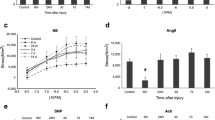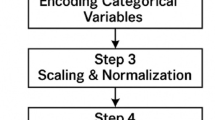Abstract
STUDIES of the characteristics of activity recorded from single carotid body chemoreceptor afferent fibres have so far been concerned with the statistics of the pattern of discharge and the effects of drugs1–3. There has been no adequate description of the activity of single fibres in response to independent changes in blood gas tensions and pH for extended ranges, and it is unclear whether or not the multifibre response curves described by Hornbein and Roos4, for example, are composed of a spectrum of differently shaped single fibre response curves showing an array of thresholds. Accordingly, we have investigated the effects of changes in arterial O2 and CO2 tensions and pH on the rate of discharge of single chemoreceptor afferent fibres dissected from the sinus nerve of the cat. The animals were anaesthetized with 0.6 ml./kg of ‘Dial-Urethane’, paralysed with 5 mg/kg of gallamine triethiodide and artificially ventilated. The arterial blood pressure and oxygen tension and end-tidal carbon dioxide tension were continuously recorded on a Grass polygraph. Arterial blood samples were taken for measurement of pH and carbon dioxide tension, which were changed by intravenous administration of 1 molar sodium bicarbonate, 1 molar ammonium chloride or 0.1 normal hydrochloric acid and by appropriate changes in rate and volume of artificial ventilation. The arterial oxygen tension was altered by varying the oxygen content of the inspired gas. Single chemoreceptor afferent nerve impulses were displayed on an oscilloscope and their frequency of discharge was monitored with a ratemeter whose output was recorded on the Grass polygraph. After a change in arterial PO2, and, in particular, after a change in either PCO2 or pH, an average 15–20 min were spent in adjusting the respiratory pump level or infusion until a new steady level of discharge, measured with the ratemeter, was obtained. After a further 5–10 min at this level, the fibre activity was photographed on moving film for 20 sec periods. The numbers of potentials in 10 sec periods were later counted from the filmed records and these counts were used to construct the graphs which show response curves.
This is a preview of subscription content, access via your institution
Access options
Subscribe to this journal
Receive 51 print issues and online access
$199.00 per year
only $3.90 per issue
Buy this article
- Purchase on SpringerLink
- Instant access to full article PDF
Prices may be subject to local taxes which are calculated during checkout
Similar content being viewed by others
References
Biscoe, T. J., and Taylor, A., J. Physiol., 168, 332 (1963).
Biscoe, T. J., Nature, 208, 294 (1965).
Eyzaguirre, C., and Koyano, H., J. Physiol., 178, 385 (1965).
Hornbein, T. F., and Roos, A., J. Appl. Physiol., 18, 580 (1963).
Joels, N., and Neil, E., J. Physiol., 154, 7P (1960).
Floyd, W. F., and Neil, E., Arch. Int. Pharmacodyn. Thér., 91, 230 (1952).
Lee, K. D., Mayou, R. A., and Torrance, R. W., Q. J. Exp. Physiol., 49, 171 (1964).
Biscoe, T. J., and Purves, M. J., J. Physiol., 190, 425 (1967).
Author information
Authors and Affiliations
Rights and permissions
About this article
Cite this article
BISCOE, T., SAMPSON, S. & PURVES, M. Stimulus Response Curves of Single Carotid Body Chemoreceptor Afferent Fibres. Nature 215, 654–655 (1967). https://doi.org/10.1038/215654a0
Received:
Revised:
Issue date:
DOI: https://doi.org/10.1038/215654a0
This article is cited by
-
The effects of asphyxia on afferent activity recorded from the cervical vagus in the duck
Pflügers Archiv European Journal of Physiology (1976)
-
New theory for receptor mechanism of carotid body chemoreceptors
Nature (1975)
-
Simultaneous Measurement of Cytochrome a3 Reduction and Chemoreceptor Afferent Activity in the Carotid Body
Nature (1970)
-
Spontaneous Activity recorded from the Central Cut End of the Carotid Sinus Nerve of the Cat
Nature (1967)



